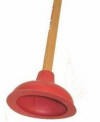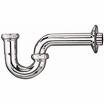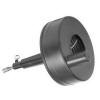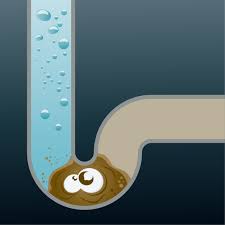Clogged Drain; If the water in your sink is slow draining or not draining at all, you may be able to clear the clog yourself. A plumber will likely charge between $50 – $200 to unclog your drain but most of things a plumber would do, you can try first.
Tools And Materials That May Be Required
- Pliers/ pipe wrench
- Bucket
- Plunger
- Hand auger
- Teflon tape
- Liquid drain cleaner
- Rubber gloves
- Needle nose pliers
Locate Where The Drain Is Clogged
In order to properly clear the obstruction you have to know where in the drain line to concentrate your efforts. If only the sink is draining slowly but the toilet and bathtub drains are flowing freely then you can be sure the sink drain is the problem. If the other fixtures in your bathroom are not draining well, then the blockage is farther down and will require a sewer auger to clear.
Start With The Easiest Fixes
The most common reason for a bathroom sink to be clogged is the pop-up plug or strainer has become covered with hair. If you have a pop-up plug in your sink you can try removing it either by twisting it by the plug or by removing the pivot rod on the back side of the outlet pipe. Once the pivot arm has been removed, the plug will pull out and you can clean the hair out with needle nose pliers. Replace the pivot arm (minus the plug) and flush the drain with hot water. If this unclogs the sink replace the plug and your done, if not, its time for the Plunger!
Using A Plunger
 The trademark plumbing tool is a very effective drain clearing instrument and is often all that is needed to unclog your home plumbing fixtures. There are two types of plungers; one is the standard toilet plunger, and there is also a smaller version called a sink plunger. If all you have is the larger toilet plunger, give it a try but it may not create a good suction. Getting a good suction between the plunger and the sink is crucial, so if your plunger is old and cracked or to big for the curves of the sink, this may not work.
The trademark plumbing tool is a very effective drain clearing instrument and is often all that is needed to unclog your home plumbing fixtures. There are two types of plungers; one is the standard toilet plunger, and there is also a smaller version called a sink plunger. If all you have is the larger toilet plunger, give it a try but it may not create a good suction. Getting a good suction between the plunger and the sink is crucial, so if your plunger is old and cracked or to big for the curves of the sink, this may not work.
- Start by blocking the overflow hole with a wet rag or your other hand; also if you have a double sink you will have to block the drain and overflow in that as well.
- Fill the sink part way with water and forcefully plunge the drain for a couple minutes, refilling with water if necessary.
- Try running some hot water and if necessary repeat plunging several more times until the water flows out normally.
- If your drain is still clogged it’s time to get you hands dirty. Read on!
Removing The P-Trap
 With a set of large jawed pliers(careful not to scratch the finish) and a bucket underneath, loosen the nuts on the trap and remove it.
With a set of large jawed pliers(careful not to scratch the finish) and a bucket underneath, loosen the nuts on the trap and remove it.- Some plastic traps may not have unions to be removed but may instead have a clean-out plug on the bottom. If this the case an auger(snake) will be your next step.
- If the trap is full of gunk, bang it out and rinse it clean, under hot water (using another sink).
- Replace the trap and run hot water to wash away the left over grime in the pipe.
- If your sink is still draining poorly the you will have to use an auger to clear it.
Using An Auger / Snake
 Obviously most homeowners don’t keep a drain auger on hand but you local plumbing supply store or hardware store probably sell a small hand auger in the $10-$20 range. You may also be able to rent a power drain auger in your area but make sure you read the operating instructions first.
Obviously most homeowners don’t keep a drain auger on hand but you local plumbing supply store or hardware store probably sell a small hand auger in the $10-$20 range. You may also be able to rent a power drain auger in your area but make sure you read the operating instructions first.
- Remove the trap or clean-out cap/plug.
- Pull out a couple feet of cable and feed it in the pipe until it hits an obstruction, which might just be a fitting to change the direction of the pipe. Spin the auger clockwise until you can move it forward some more, feeding in more cable.
- If you think the auger is to the clogged section spin it some more, and hopefully the end of the auger will grab on to the clog allowing you to pull it back or break it up.
- Repeat this a couple of times before replacing the trap and testing the drain.
Liquid drain cleaners
*First of all these are dangerous and can cause severe burns or blindness. Ensure you carefully read and follow the instructions on the bottle.
- Don’t use drain cleaners if the water in your sink doesn’t drain at all, because if they don’t clear the clog, your sink and drain line are going to be left full of very corrosive chemicals.
- After using a corrosive drain cleaner flush your pipes thoroughly.
If all these steps have failed it may be time to call in a professional plumber.

